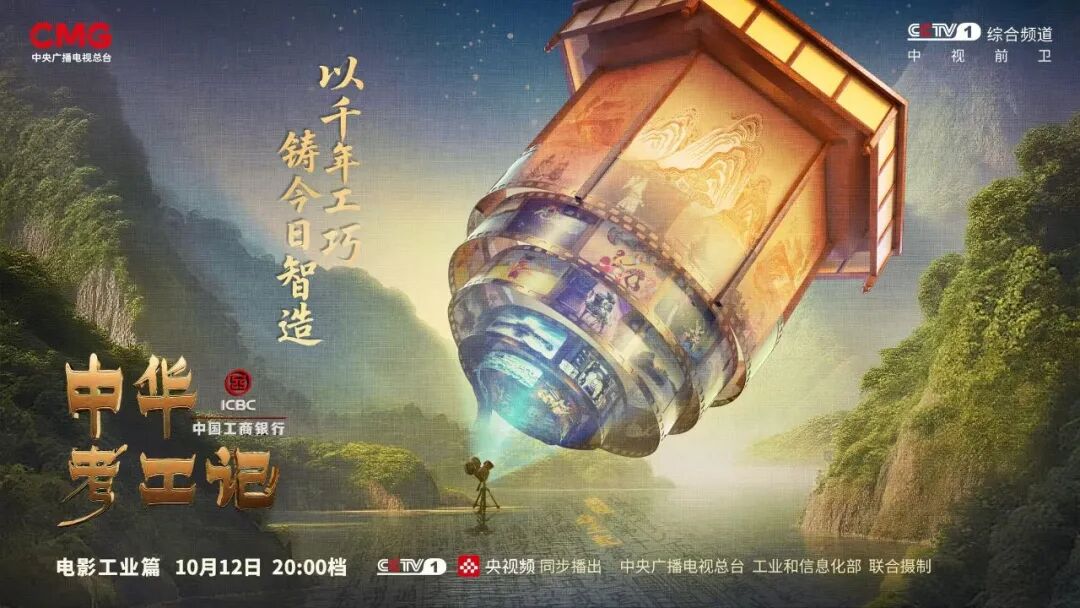
From the fingertip skills of the "leather craftsmen" in the "Kaogongji" (Records of the Imperial Craftsmen) to the dynamic narratives of light and shadow in shadow puppetry, the Chinese people have never ceased their exploration of "light" and "shadow." This millennia-long pursuit has not ceased in the realm of art but is deeply woven into the fabric of modern industry. Today, within China's vast ecosystem encompassing 666 industrial sectors, from precision machinery manufacturing and innovative chemical processes to cutting-edge digital coding and materials engineering, diverse forces converge to form a systematic film industry chain.

The first industrial culture program "Chinese Craftsmen's Records", jointly produced by China Media Group and the Ministry of Industry and Information Technology, will be broadcast on CCTV-1 at 20:00 on October 12th in the film industry segment, and will be exclusively premiered on CCTV Video.
This episode features an innovative audio-visual program, "Kaogong: The Craftsmanship of Leatherwork," which takes visitors on a journey through the lives of pre-Qin artisans, initiating a dialogue between civilizations across time and space. Through situational interpretation, profound recitation, and imaginative dance, the program brings the wisdom of pre-Qin leatherworkers to life on stage.
On stage, the Han people forged armor, the Bao people tanned leather, and the Wei and Qiu families sewed, each showcasing their unique talents. The Qi people, however, crafted drums, whose sounds resonated deeply with the heart. Specializing in drum making, they were known as "tune-makers of ritual music," extracting the toughness of leather and transforming it into a sound that became a source of battlefield morale and a symbol of millennial spirit.

Leather's journey in the hands of the ancients went beyond practical application. The "Kaogongji" (Records of the Craftsmen) records the Han people's wisdom in crafting armor, adhering to the principle of "using leather for the right part"—thick leather for key areas for strength, thin leather for joints for flexibility. This principle of "construction based on material, shaping based on purpose" was skillfully continued and refined by later generations of shadow puppeteers. Thus, at the fingertips of the artists, leather craftsmanship underwent a magnificent transformation from "practical" to "artistic": thin areas allowed light to pass through, creating shadows, while thick areas provided a firm, sculpted shape. Shadow puppetry, the film's prequel to light and shadow, begins with this fusion of leather and light .
From armor to shadow puppets, witness the tenacity and tenderness of Chinese leather craftsmanship
If the "leather-carving work" in "Kaogong Ji" is the starting point for giving shape and toughness to objects, then shadow puppetry is the most splendid extension of this skill in light and shadow.
Shadow puppetry is an art form involving the use of animal hides, cardboard, and other materials to create translucent silhouettes, which are then cleverly projected onto a white screen using lights from different angles, vividly interpreting stories from ancient and modern times.
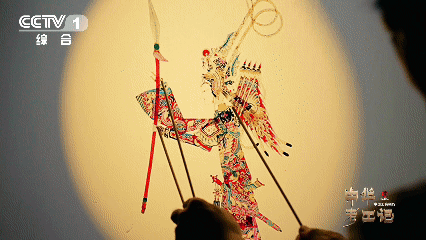
French film historian Georges Sadoul wrote in his History of World Cinema: "The forerunners of cinema were shadow puppetry and magic lanterns." The "shadow" of shadow puppetry reflects the Chinese people's millennium-long fascination with the art of light and shadow. From the "light reaches the end of the shadow" in the Mo Jing (Mojing), to Ding Huan's "Nine-Tiered Boshan Incense Burner" from the Han Dynasty, which sketched the rudiments of dynamic projection amidst flickering candlelight; from the Tang and Song Dynasty "moving lanterns" that used candlelight to drive the movement of images, a primitive "frame rate experiment"; to the modern "pulled shadow puppets" that used wooden box lenses to capture the world's scenery, outlining the original blueprint for the projector - this is an uninterrupted journey of exploration of light and shadow.
2025 marks the 120th anniversary of Chinese cinema. From the stirring beats of drums to the transmission of values through film, and finally to the illumination of our times, this is a millennium-long spiritual relay and an uninterrupted dialogue between civilizations. CCTV hosts Sa Beining and Wang Jianing will take viewers on a journey through the production of four domestic blockbusters, focusing on the technological advancements of China's modern film industry. From physical set design to digital virtual reality, from heavy machinery to AI algorithms, they'll uncover how industrial power reshapes the magic of light and shadow.
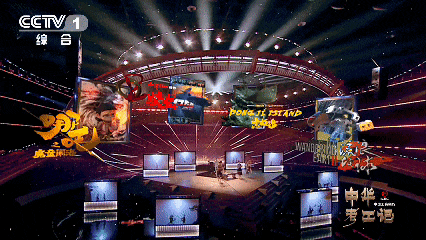
Technological innovation in the film industry in the new era
Every breakthrough in Chinese cinema is inseparable from the support of industrial strength, the most intuitive of which is the physical manufacturing that builds the real framework for film.
On the stage, a 1:200 scale model of the "Dragon Whale" from "Operation Jiaolong" was unveiled for the first time, completely restoring all the details of the giant submarine used in the filming.
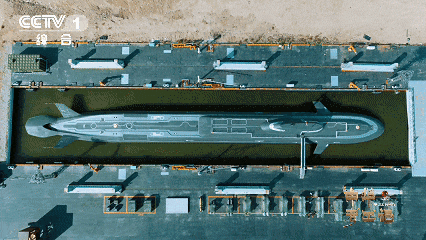
"A great nation's powerful weapon must be portrayed as a great nation." The "Dragon Whale" submarine in "Operation Jiaolong" is not only a giant prop but also a deep-sea industrial challenge. The crew relied on cutting-edge manufacturing technologies like 3D printing and CNC engraving to recreate the interior structure on a 1:1 scale. This is precisely the confidence that China's mature industrial manufacturing system gives the film's "deep dive" to this point.
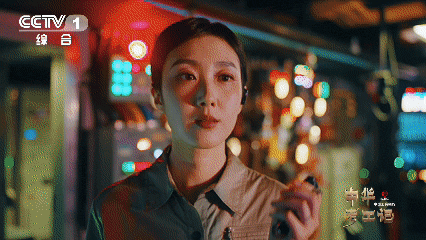
In "Operation Jiaolong," the massive "Dragon Whale" submarine lies dormant, heightening the sense of realism and immersion. Its meticulous detail makes the actors' performances more intimate and the audience feel as if they are there. It also directly demonstrates the strength of Chinese military equipment. From the construction of the "Dragon Whale" to the realistic explosions at over 50 bomb sites within the cabin and the presentation of extreme scenes such as deep-sea combat, all were accomplished with physical sets. The "heavy weapon of a great power" brought to life on the screen showcases the hardcore strength of the Chinese film industry.
Doorframe robots, electromagnetic muscle arms, space elevators... The "Wandering Earth" series, a benchmark for Chinese science fiction films, opened the door to the Chinese sci-fi genre with its "realistic sci-fi" aesthetic rooted in China's industrial strength, showcasing the breakthroughs of the Chinese film industry to the world. It's understood that some of the film's sci-fi scenes were shot on location.
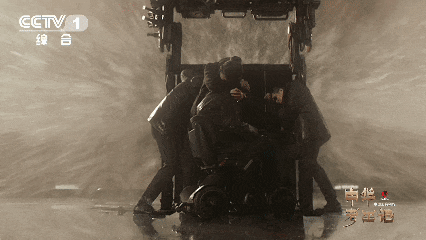
Behind the stunning scenes of "The Wandering Earth 2" lies a concentrated display of China's engineering machinery strength. The film invested in a total of 61 pieces of heavy equipment from 42 different models, over 400 sets of precision parts, and 319 professional technicians, providing professional support throughout the entire process, from equipment customization and manufacturing to specialized painting and on-site execution.
The iconic scene in the film where the "Iron Mantis" crane lifts a planetary engine was inspired by an unmanned platform capable of carrying 800 kg in extreme temperatures of -40°C. This heavy-duty equipment, known as the "engineering machinery hero," not only transported important props on set, but also provided exceptional stability, ensuring smooth and stable filming of complex, long shots like the space elevator's collapse.
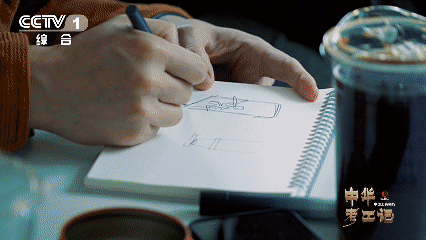
The program also showcased the creation process of the doorframe robot, which quickly went viral after the release of "The Wandering Earth": from director Guo Fan's hand-drawn sketches, to industrial designers designing using CFD, FEA and other technologies, and then to the assembly of more than 1,000 3D-printed parts. When this "non-humanoid" robot deployed a shield to protect the character played by Li Xuejian in the movie, the audience saw not only science fiction imagination, but also the hard-core strength of China's engineering machinery "from workshop to screen", which is also the "spirit of a hundred craftsmen" that has spanned thousands of years and passed on from generation to generation.
Reconstructing the filming logic of movies and allowing digital technology to accurately empower the picture
If physical manufacturing is the skeleton of a film, then digital technology is its soul. It breaks the limitations of physical scenes and makes more light and shadow imagination possible.
CCTV host Wang Jianing, a new actor, had a groundbreaking filming experience: donning a motion capture suit and sitting in a car to experience the actual filming process of a virtual car rollover scene. Through perfect coordination with the LED screen and the mechanical crew, she successfully performed the scene without the need for a rollover. In "virtual production," the actors' performances in the motion capture suits can be described as a "real-time rehearsal."
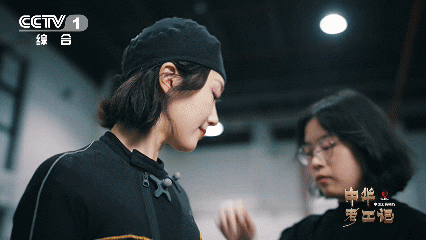
What is a "preview"? To put it in perspective, it's like writing a rough draft before writing an article or drawing a "proof" before Lu Ban builds a car. It's the "electronic proof" before filming officially begins. Specifically, it uses 3D technology to "clone" a virtual world in digital space that is identical to the real scene. Actors and cameras can fully rehearse the story to be filmed in this virtual world. Whether it's a car rollover scene, a cliffhanger scene, or even a space odyssey or hardcore sci-fi drama, filming now has safer and more efficient methods. Virtual filming has been widely used in TV series and is opening up new dimensions to filmmaking.
Furthermore, during the filming of the film "East Pole Island," the underwater photography team achieved a technological breakthrough thanks to a independently developed underwater photography robot. Capable of precise 360-degree control, this "deep-sea photographer" successfully completed challenging shots such as the film's one-shot diving treasure hunt, achieving image stability that even surpassed that achieved by human divers shooting handheld.
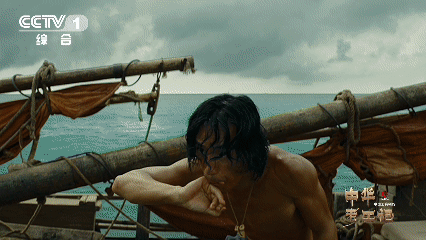
The core of the robot lies in a proprietary "sonar anti-current hovering module." This technology, originally used in marine engineering, draws on the principle of underwater echolocation. By sensing water velocity through sound waves, the robot can autonomously adjust its thrust in real time to precisely offset current impacts, enabling long-term, high-precision, and stable hovering in complex waters. This not only fundamentally ensures the ultimate stability of film footage, but also significantly reduces the risk of current collisions previously faced by underwater photographers.
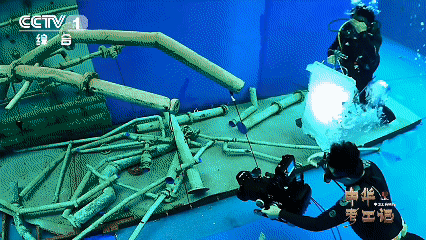
Industrial division of labor system for animated films
Elevating personal art to mass production
Whether it is the precision of physical manufacturing or the innovation of digital technology, it ultimately requires collaboration to be realized. Modern animated film creation is the best embodiment of division of labor and collaboration.
One hundred thousand heavenly soldiers and generals, beasts of the barrier, maps of mountains and rivers, lotus root powder dolls... The movie "Nezha 2", which has a strong traditional Chinese art style, has promoted the transition of Chinese animation from traditional production mode to industrialized production system. What are the creative stories behind it?
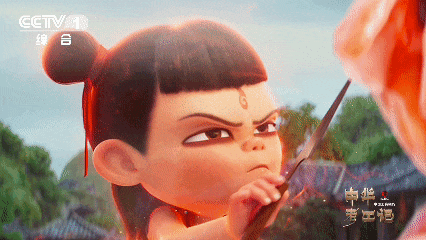
At the opening scene of the film "Nezha 2," Nezha, while recreating his body with lotus root powder, also sculpted a likeness of himself. That ugly, adorable lotus root powder doll was the work of a dedicated team of children aged 3 to 8. After scanning, fine-tuning, and texturing the dolls, these children provided a physical reference for the artists, making Nezha's physical form more vivid and three-dimensional in the animation. The film's magnificent alchemy furnace, featuring the unique state of the Tianyuan Ding, had 150 shots, all produced by 57 visual effects companies.
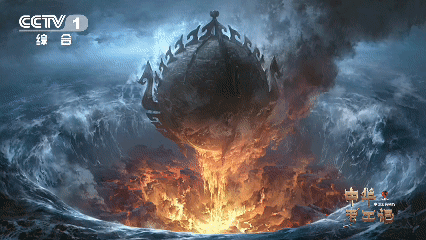
Behind the scenes of this animated film, which grossed 15 billion yuan at the box office, was the industrial collaboration of nearly 140 companies and 4,000 employees, embodying the division of labor described in the Kaogongji (Records of the Imperial Craftsmen): "There are six state-owned occupations, and all craftsmen share one of them." When Nezha soared across screens at home and abroad, audiences witnessed not only a visual spectacle but also a network of collaboration as precise as the gears of a clock, a continuation of the collaborative spirit of "all craftsmen working in unison."
From shadow puppetry to digital motion capture, from hand-carving to AI-generated creation, the tools may have evolved, but the pursuit of perfect imaging remains constant. As revealed in the Kaogongji (Record of the Craftsmen), the true spirit of craftsmanship lies in striking a balance between beautiful materials and ingenious workmanship, continuing the millennium-old legend of ingenuity in this contemporary era.